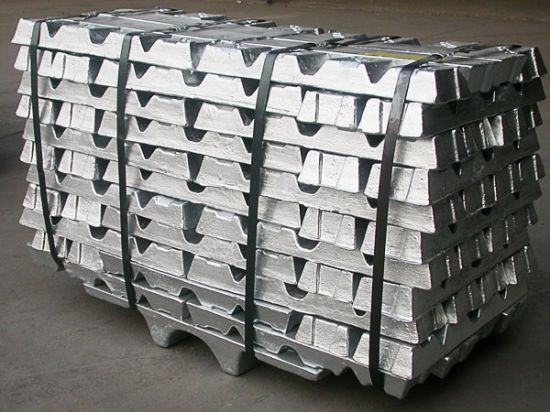Tin
Properties
Tin is a soft, malleable, ductile and highly crystalline silvery-white metal. When a bar of tin is bent, a crackling sound known as the “tin cry” can be heard from the twinning of the crystals.[7] Tin melts at low temperatures of about 232 ° C (450 ° F), the lowest in group 14. The melting point is further lowered to 177.3 ° C (351.1 ° F) for 11 nm particles.
Commercial grades of tin (99.8%) resist transformation because of the inhibiting effect of the small amounts of bismuth, antimony, lead, and silver present as impurities. Alloying elements such as copper, antimony, bismuth, cadmium, and silver increase its hardness. Tin tends rather easily to form hard, brittle intermetallic phases, which are often undesirable. It does not form wide solid solution ranges in other metals in general, and few elements have appreciable solid solubility in tin. Simple eutectic systems, however, occur with bismuth, gallium, lead, thallium and zinc.

Uses
- Solder : Thanks to the positive growth forecasts for electronics and solar cell markets, as well as continued conversion to lead-free soldering, the long-term outlook for solder usage remains balanced or slightly positive against smaller unit volumes as a result of miniaturisation.
- Tin plating: Tinplate is mainly used in food cans as well as in some beverage cans, general line cans for chemicals, paints and dry products and also in can ends. Global consumption of tinplate remains static or declining with new opportunities in emerging economies and circular economy regulation.
- Specialized alloys: Tin in combination with other elements forms a wide variety of useful alloys. Tin is most commonly alloyed with copper, bearing metal has a high percentage of tin as well. Bronze is mostly copper (12% tin), while addition of phosphorus gives phosphor bronze. Bell metal is also a copperâtin alloy, containing 22% tin.
- Optoelectronics ; The oxides of indium and tin are electrically conductive and transparent, and are used to make transparent electrically conducting films with applications in Optoelectronics devices such as liquid crystal displays.
- Lead-Acid Batteries
- Copper Alloys & Other Uses
- Tin Chemicals
